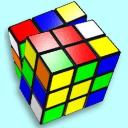Yahoo Answers is shutting down on May 4th, 2021 (Eastern Time) and beginning April 20th, 2021 (Eastern Time) the Yahoo Answers website will be in read-only mode. There will be no changes to other Yahoo properties or services, or your Yahoo account. You can find more information about the Yahoo Answers shutdown and how to download your data on this help page.
Trending News
how do I solve this probability Dice problem?
If you throw a roll with two Dice, the probability that the sum will be twelve is equal to 1/36. What is the probability that the sum will not be twelve?
How do I get the answer: 35/36
can someone show me how I can get that answer. Thank you.
2 Answers
- PuzzlingLv 71 year agoFavorite Answer
There is 1 way to get a roll of twelve:
6+6 = 12
There are 36 possible outcomes of two dice (6*6 = 36)
So the probability of rolling a sum of twelve is:1/36
The opposite probability is NOT rolling a sum of twelve and that can be found two ways.
1) You could count all the ways to not get a sum of twelve. Since there are 36 ways to roll the dice and only 1 is a roll of twelve, that means there are 35 that are NOT a sum of twelve. So the probability of NOT getting a sum of twelve is 35/36.
2) For any opposite probability you can subtract from 1.
P(not A) = 1 - P(A)
So just subtract the probability from 1:
1 - 1/36 = 35/36
Answer:
35/36
This is a fundamental concept, so let me give you a few more examples:
If the probability of it raining is 0.10, the probability of it NOT raining is 0.90.
If the probability of drawing an Ace is 1/13, the probability of NOT drawing an Ace is 12/13.
Remember the second rule, and practice some other examples.




